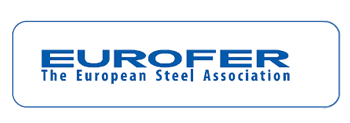Brussels, 25 October 2017 – Strengthening investment and robust exports are boosting the performance of steel-using sectors in the EU. Steel demand is expected to continue its gradual recovery in 2018. However, increasing import pressure in in the second quarter of 2017 signals that foreign supply remains a critical issue for the EU steel sector.

EU steel market
Apparent steel consumption in the EU fell slightly in the second quarter of 2017, following robust growth in the first quarter. This slight year-on-year dip was a technical correction related to the stock cycle rather than a sign of weakening in the underlying consumption trend. Unfortunately, EU domestic suppliers bore the brunt of this demand dip; their deliveries into the community market fell by 3.5% year-on-year in the second quarter, whereas third country imports grew by just over 10% year-on-year.
“The relative balance between growth in domestic and foreign supply seen in the first quarter of 2017 was reversed at the expense of EU steel mills. Despite a reduction in imports from China and several other countries owing to corrective anti-dumping duties put in place third country import volumes have risen again in the second quarter, said Axel Eggert, Director General of the European Steel Association (EUROFER).
First estimates for apparent steel consumption in the third quarter of 2017 signal a return of EU steel buyers to the market. The destocking in the second quarter is expected to have led to a lower-than-usual inventory reduction in the third quarter. The forecast for fourth quarter apparent steel consumption is for continued year-on-year growth, but with seasonal destocking dampening growth over this three month period.
Overall, EU apparent steel consumption is forecast to increase by 2.3% over the whole year 2017. Steel demand is expected to continue its gradual recovery in 2018, driven by the expected rise in real steel consumption in the EU market and very modest support from the stock cycle. This continues the gradual recovery in steel demand that began in 2014.
As has been the case in recent years, the extent to which EU steel suppliers will actually benefit from growing EU demand is uncertain. Import distortions remain the main risk for the stability of the EU steel market.
EU steel-using sectors
Business conditions in EU steel-using sectors remained supportive to growth in the second quarter of 2017. Production activity grew by 3.1% year-on-year, and first quarter 2017 growth was revised up to 6.3% compared to the same period in 2016. The positive trend in output over the first half of 2017 was the result of an increasingly synchronised and robust performance across EU member states and of steel-using sectors therein.
Mr Eggert said, “We welcome the healthy performance of relatively steel-intensive sectors. These include the automotive and engineering industries, as well as tube manufacturers, over the first half of 2017. Growth in the construction industry was the strongest it has been for many years and clearly reflects improving fundamentals in this important steel-using segment”.
Estimates and forecasts for the second half of 2017 are for a continuation of the robust growth trend seen in the first half. On balance, total output in 2017 is forecast to rise by 4.2%.
The outlook for 2018 is positive overall. The relatively strong anticipated growth in investment, and the continued expansion of private consumption, will support EU domestic demand. Exports will also contribute to further activity growth among steel-users. Output in the EU’s steel-using sectors is forecast to grow by 1.9% in 2018.
EU economic context
The economic upswing in the EU is becoming increasingly synchronised across countries and GDP spending categories. Multi-year peaks in confidence indicators at the end of the third quarter of 2017, robust hard data on the labour market, in services and in manufacturing, bode well for the performance of the EU economy in the final quarter of 2017 and in 2018.
The business climate looks set to remain supportive to continued healthy investment growth, whereas private consumption growth is foreseen to slow down somewhat. In combination with stable growth of government consumption, domestic demand will be the major driver of economic growth in the EU. Meanwhile, prospects for the external sector remain positive as well, owing to a favourable outlook for the global economy and international trade activity in 2018.
On balance, EUROFER’s October 2017 outlook forecasts EU GDP growth of 2.1% in 2017 and of 1.9% in 2018.
About the European steel industry
The European steel industry is a world leader in innovation and environmental sustainability. It has a turnover of around €170 billion and directly employs 320,000 highly-skilled people, producing on average 170 million tonnes of steel per year. More than 500 steel production sites across 24 EU Member States provide direct and indirect employment to millions more European citizens. Closely integrated with Europe’s manufacturing and construction industries, steel is the backbone for development, growth and employment in Europe.
Steel is the most versatile industrial material in the world. The thousands of different grades and types of steel developed by the industry make the modern world possible. Steel is 100% recyclable and therefore is a fundamental part of the circular economy. As a basic engineering material, steel is also an essential factor in the development and deployment of innovative, CO2-mitigating technologies, improving resource efficiency and fostering sustainable development in Europe.
